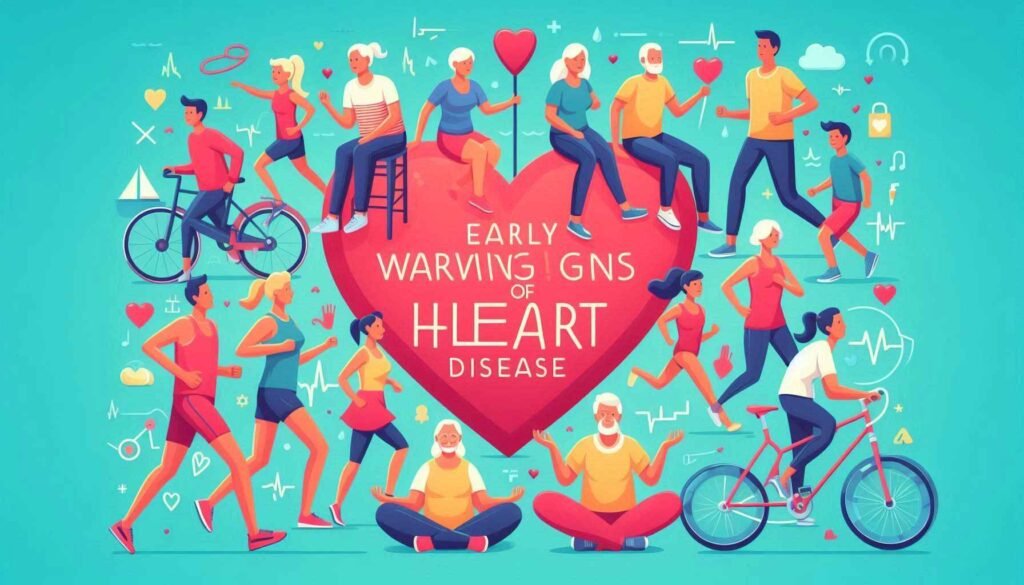
The Impact of Climate Change on Global Health: Emerging Risks
Introduction: Understanding the Connection Between Climate Change and Health
Climate change poses significant risks to public health across the globe. Rising temperatures, extreme weather events, and shifting environmental patterns are creating new and more complex health challenges. These changes are already having a profound effect, and as the climate continues to warm, the risks will only grow.
This post explores the emerging health risks driven by climate change, highlighting how they affect vulnerable populations. It also discusses the actions necessary to mitigate these risks and safeguard human health.
Heatwaves and Heat-Related Illnesses: Rising Threats
Heatwaves are becoming more frequent and intense due to climate change. Extreme heat is especially dangerous for vulnerable groups, including the elderly, children, and those with pre-existing conditions. Exposure to high temperatures can lead to serious health issues such as heat exhaustion, heatstroke, and dehydration, all of which can be fatal.
As temperatures continue to rise, cities will face increased rates of heat-related illnesses, particularly in urban areas where heat islands amplify the effects. These conditions will place significant stress on healthcare systems, which may struggle to treat the surge in heat-related emergencies.
To combat these risks, cities should work to reduce the urban heat island effect. Planting more trees, increasing green spaces, and using reflective materials on buildings and roads can help cool down urban areas. Governments must also improve access to cooling technologies, such as air conditioning, for the most vulnerable groups.
Vector-Borne Diseases: Expanding Threats
Climate change is also contributing to the spread of vector-borne diseases. Warmer temperatures and changing rainfall patterns create ideal conditions for insects like mosquitoes and ticks to thrive. This increases the spread of diseases such as malaria, dengue, Lyme disease, and Zika virus.
As these insects expand their range, new regions are experiencing outbreaks of diseases once limited to tropical areas. For example, areas that were once too cold for mosquitoes are now seeing malaria and dengue fever outbreaks. This poses a significant public health risk, especially in regions with limited healthcare infrastructure.
Efforts to control these diseases must include vector control programs and improved disease surveillance. Public education on preventing insect bites and eliminating breeding sites is also essential in reducing the spread of these diseases.
Water and Food Security: Addressing Malnutrition and Waterborne Diseases
Climate change is also impacting water and food security. Extreme weather events like floods and droughts are disrupting agriculture and water supplies. These disruptions contribute to food and water shortages, leading to malnutrition and increased risks of waterborne diseases.
In many areas, flooding can contaminate water supplies with harmful pathogens, leading to diseases such as cholera and dysentery. Droughts, on the other hand, reduce access to clean water and negatively affect food production, heightening the risks of malnutrition.
Malnutrition weakens the immune system, making individuals more susceptible to illness. It is especially dangerous for children, as it can affect their physical and cognitive development. Populations in low-income and developing regions are most at risk from these disruptions.
To improve water and food security, governments must focus on better water management practices and more resilient agricultural methods. Sustainable farming techniques that can withstand extreme weather events should be promoted. Additionally, efforts to increase public awareness about nutrition and sustainable food sources will help mitigate the effects of malnutrition.
Social and Economic Implications of Climate Change on Health
The effects of climate change are not just environmental; they have profound social and economic implications. As climate-related health risks intensify, they place an increasing burden on healthcare systems, communities, and economies. Vulnerable populations, particularly those in developing countries, are at heightened risk. These individuals often lack access to the necessary resources and infrastructure to adapt to or recover from climate-induced health crises.
In addition to the direct health consequences, the economic costs associated with climate change-related illnesses and fatalities are staggering. The financial strain on healthcare systems, emergency services, and public health infrastructure is immense. Countries with weaker economies may find it particularly challenging to deal with this rising health burden.
The Rising Financial Burden on Healthcare Systems
Healthcare systems are already overstretched in many parts of the world, and climate change is pushing them to their limits. The increase in heatwaves, infectious diseases, and waterborne illnesses is leading to a higher demand for medical care, placing pressure on hospitals and clinics. Emergency rooms and intensive care units often become overcrowded during heatwaves, and infectious disease outbreaks may require mass mobilization of health workers and resources.
This increased demand for healthcare services is further exacerbated by the lack of funding and resources in many regions, especially in low- and middle-income countries. These regions are often hit hardest by climate-related health risks, with limited access to preventive measures, medical care, and public health education. Inadequate healthcare infrastructure can make it even more difficult to cope with the rising tide of climate-related illnesses.
The financial costs associated with treating these diseases can also strain national economies. Countries may face rising healthcare costs as a result of increased hospitalizations, longer recovery times, and more frequent public health emergencies. These economic burdens may limit governments’ ability to invest in other important areas, such as education, infrastructure, and economic development.
Vulnerable Populations: Protecting Those Most at Risk
Certain populations are disproportionately affected by climate change. Vulnerable groups, such as the elderly, children, pregnant women, and individuals with pre-existing health conditions, are at greater risk of suffering from the health impacts of climate change. Low-income communities are also more vulnerable, as they often lack access to healthcare, clean water, and nutrition.
The elderly, for example, are more likely to suffer from heat-related illnesses due to their age and underlying health issues. Children, whose bodies are still developing, are also at increased risk of dehydration and heat exhaustion. Pregnant women face additional complications, including risks to their health and the health of their unborn child.
In addition, people with chronic health conditions such as asthma, heart disease, and diabetes are more susceptible to the health effects of climate change. For instance, air pollution exacerbated by climate change can worsen respiratory conditions, while increased temperatures can strain cardiovascular systems.
Low-income communities are often located in areas more prone to climate-related hazards such as floods, droughts, and heatwaves. These populations may also face barriers to accessing healthcare services, which further increases their vulnerability. Ensuring that these groups have access to healthcare, clean water, and safe living conditions is crucial in reducing the negative health impacts of climate change.
Building Climate-Resilient Healthcare Systems
To combat the health impacts of climate change, it is essential to build climate-resilient healthcare systems. This means designing healthcare infrastructure that can withstand extreme weather events and other climate-related challenges. Hospitals, clinics, and other healthcare facilities must be equipped with the resources needed to respond to increased demand during climate-related health emergencies.
Investing in early warning systems and climate monitoring tools is also critical. These systems can provide advance notice of extreme weather events, allowing healthcare facilities and emergency services to prepare in advance. By identifying at-risk populations and areas, governments and organizations can implement targeted health interventions to reduce the impact of climate change on public health.
Training healthcare workers to recognize and respond to climate-related health risks is another key aspect of building resilience. In addition to providing immediate medical care, health professionals must be prepared to address the long-term health effects of climate change, including mental health issues such as anxiety, depression, and trauma caused by climate-related disasters.
Mitigation Strategies: Reducing Health Risks through Policy and Action
While adaptation is critical, mitigating the effects of climate change is equally important. Governments and organizations must prioritize policies that reduce greenhouse gas emissions and limit the extent of climate change. By addressing the root causes of climate change, we can reduce the overall health risks that emerge from global warming.
One key mitigation strategy is promoting the transition to clean energy. Shifting away from fossil fuels toward renewable energy sources, such as solar and wind power, can significantly reduce air pollution, which is a major contributor to respiratory and cardiovascular diseases. In addition, promoting sustainable transportation systems, such as electric vehicles and public transit, can further reduce emissions and improve air quality in urban areas.
Protecting natural ecosystems, such as forests, wetlands, and oceans, is another important mitigation strategy. These ecosystems act as carbon sinks, absorbing CO2 from the atmosphere and helping to regulate global temperatures. By preserving these ecosystems and restoring damaged ones, we can reduce the overall impact of climate change and protect human health.
Public health policies must also focus on reducing the health impacts of climate change by improving access to clean water, sanitation, and nutritious food. Implementing sustainable agricultural practices and promoting climate-resilient food systems will be crucial in addressing food insecurity and malnutrition, particularly in developing countries.’
Adapting Healthcare Systems to Climate Change Health Risks
Climate change is reshaping healthcare systems around the world. Extreme weather events, disease outbreaks, and new health threats demand that healthcare systems adapt to these emerging risks. Addressing the health consequences of climate change requires strengthening healthcare infrastructure, improving disease surveillance, and training healthcare workers to respond effectively to new challenges.
Healthcare facilities must be designed to handle increased demands during climate-related crises. They must withstand extreme weather events like floods, hurricanes, and heatwaves. Additionally, medical staff needs training on how to manage the health consequences of climate change, such as heatstroke, respiratory diseases, and vector-borne diseases.
Building resilience in healthcare systems is crucial for minimizing the effects of climate-related health crises. By upgrading health facilities, improving access to healthcare, and enhancing public health infrastructure, communities can better respond to future health emergencies caused by climate change.
The Role of Early Warning Systems and Disaster Preparedness
Effective disaster preparedness is key to reducing the health impacts of climate change. Early warning systems allow authorities to track extreme weather events, outbreaks of diseases, and other climate-related threats. By providing early alerts, these systems give communities the time to take preventive measures before a crisis unfolds.
Early warning systems also support healthcare providers by helping them prepare for surges in patients during extreme weather events. Whether it’s a heatwave or a flood, early warnings allow healthcare professionals to respond quickly and allocate resources where they are needed most.
Coordinating these systems with local healthcare teams ensures that communities receive timely information and can implement protective measures. Governments should invest in such systems to mitigate the health risks posed by climate change, especially in vulnerable regions.
Investing in Climate-Resilient Health Infrastructure
Healthcare systems must be equipped to handle the stresses caused by climate change. Climate-resilient infrastructure helps ensure that healthcare facilities can function even during extreme weather events. Hospitals, clinics, and emergency services need to be able to continue operating despite disruptions like power outages, flooding, and water shortages.
Key investments include upgrading building structures to withstand natural disasters and ensuring reliable water and sanitation systems. Backup power sources, such as solar energy, can keep healthcare services running when electricity grids fail. These investments will help healthcare facilities serve communities during times of crisis.
Improving access to health services in vulnerable regions is another critical step. Many low-income areas lack adequate healthcare infrastructure, leaving populations at greater risk. Governments must focus on building resilient health systems in these regions to ensure everyone has access to care when they need it most.
Empowering Communities through Public Health Education
Raising awareness about climate change and its health impacts is essential for protecting communities. Public health education helps individuals understand the risks they face and equips them with the knowledge to protect themselves and their families. For example, people can learn how to prevent heat-related illnesses, recognize the symptoms of vector-borne diseases, and take steps to safeguard themselves during extreme weather events.
Public health campaigns must also target vulnerable groups such as the elderly, children, and low-income communities. These populations are often at higher risk during climate-related health events and may not have the resources or knowledge to protect themselves. Tailored outreach programs can empower these groups to take preventive actions, reducing the health impact of climate change.
Training healthcare workers to deliver health education is also crucial. Local healthcare providers often serve as trusted sources of information in their communities. By equipping them with climate change education tools, they can spread awareness and help individuals respond appropriately to health threats.
The Importance of Research and Data Collection
To combat the health effects of climate change, more research is needed. Scientists must gather data on how climate change impacts human health. This data can guide decision-makers in creating targeted health interventions to prevent or manage climate-related health risks.
Ongoing surveillance of disease patterns, air quality, and water availability is essential to understanding how climate change affects public health. This information enables governments and health organizations to act quickly when new health threats emerge, such as the spread of vector-borne diseases or respiratory issues linked to air pollution.
Researchers should also focus on understanding the mental health impacts of climate change, as anxiety, stress, and trauma from extreme weather events or natural disasters are becoming increasingly common. Mental health is a critical part of the climate change health equation and requires more attention from the research community.
Global Collaboration to Address Climate Change Health Risks
Solving the health challenges posed by climate change requires global collaboration. Climate change is a global problem, and no single nation can address its health impacts alone. Countries must work together to share data, research, and best practices for mitigating the health risks of climate change.
International organizations like the World Health Organization (WHO) and the United Nations (UN) play a vital role in facilitating collaboration between countries. These organizations can support research, provide technical assistance, and help fund adaptation projects in vulnerable regions. Strengthening international partnerships is critical to reducing health risks worldwide.
By working together, countries can share resources and knowledge, ensuring that healthcare systems worldwide are prepared for the challenges posed by climate change. Global cooperation is essential to protecting human health in an increasingly unpredictable climate.



